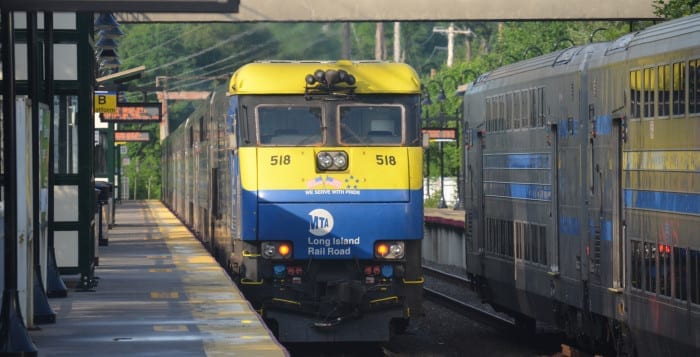By Dave Kapell
One of the strategies being widely discussed as a means of revitalizing the Long Island economy is the creation of transit-oriented developments, especially in downtowns served by the Long Island Rail Road. These developments are much needed and would serve multiple purposes — increasing housing options, enhancing downtown areas and providing places to live and work with easy access to and from New York City. But they are not new to Long Island. Greenport on the North Fork was a transit-oriented development in the mid-19th century and thus underscores the potential that this long-standing tradition still offers Long Island, if we can focus on mobility.
Ironically, when the LIRR’s track to Greenport was laid in 1844, it was not to provide transit access to New York City but to connect New York with Boston, because the technology did not yet exist to bridge Connecticut’s rivers. Greenport was, and still is, the terminus for the LIRR Main Line —aka the Ronkonkoma Branch — but its fundamental role at the time was to provide a transit connection to Boston by ferry. It was a two-way street for people and for commerce.
In the mid-19th century the only way to travel by train from New York City to Boston was by taking the LIRR from Brooklyn to Greenport, transferring there to a ferry to cross the Long Island Sound to Connecticut and then resuming train travel to Boston. Greenport, therefore, evolved naturally as a transit-oriented development with a thriving downtown that was created during this period with housing as well as jobs, commerce and robust population growth. That’s still a central appeal for the concept today, and it’s especially timely.
New York City is both the financial capital of the world and a powerful magnet for youth and talent. That makes it all the more important that Long Island build upon its proximity to the city by expanding transit access to its dynamic economy and the jobs it offers to Long Island residents and, as importantly, the talent pool it offers to support Long Island businesses. It’s also important to recognize that young people are much less inclined to drive cars than previous generations.
But there are two keys to maximizing that access. First, we need to make it easier to live and work near LIRR stations. The good news there is that the Long Island Index and the Regional Plan Association determined in 2010 that a total of 8,300 acres are available for infill development within a half-mile of LIRR stations and downtowns. That means that transit-oriented developments can enhance downtown areas while reducing pressure for development on Long Island’s iconic and treasured rural landscape.
Second, we must enhance the LIRR infrastructure to make reverse commuting — from New York City to Long Island — more available. On the 9.8-mile stretch of the LIRR Main Line between Floral Park and Hicksville, we’re still using the same system of two tracks that were laid in 1844 when the Island population was 50,000. Today, 171 years later, we have the same two tracks and a population of 3 million. Six LIRR branches now converge on this bottleneck, turning it into a one-way street during the peak morning rush, making reverse commuting impossible.
At present, we cannot compete successfully with other suburban areas in the metropolitan region where reverse commuting by transit is readily available. The jobs and young people that we want are, therefore, going elsewhere. It defies common sense to think that Long Island can thrive in the 21st century with this critical defect in our transit system left in place.
The solution is to expand the current LIRR system of tracks to support Long Island’s economy, just as we did in 1844 when the track to Greenport was laid. Only now, we need to add a third track — or, as some call it, a Fast Track — to relieve the bottleneck between Floral Park and Hicksville. It is strangling the Long Island economy and, according to a recent report by the Long Island Index, building the Fast Track would relieve the problem and generate 14,000 new jobs, $5.6 billion in additional gross regional product, and $3 billion in additional personal income by 2035, 10 years after its completion.
The Long Island Rail Road remains an extraordinary resource, but it needs to be thought of again as a two-way street. We also need to think beyond the auto-dependent suburban model to a future where young people, who are the workforce of that future, have the option to live on Long Island or in the city and have easy transit access to jobs in either place.
Greenport knows the value of transit-oriented development arguably as well as any community on Long Island, because ferry, bus and rail facilities continue to power its reputation as a walkable village where people can live, shop, be entertained and get to work without driving. If Long Island now seizes on this time-honored track to success, the concept may well become fundamental to the revitalization of the region’s economy as well.
Dave Kapell, a resident of Greenport, served as mayor from 1994 to 2007. He is now a consultant to the Rauch Foundation, which publishes the Long Island Index.





